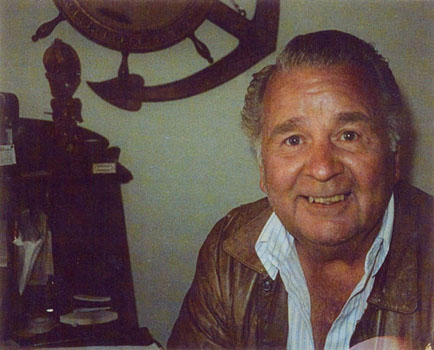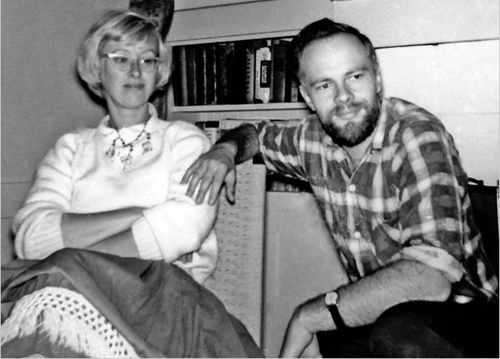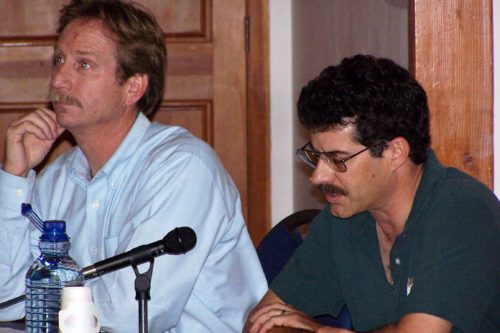I originally wrote most of this posting as a book review for the July 28 Point Reyes Light where I was editor and publisher for 27 years before retiring 10 years ago.
Anne and the Twentieth Century is the surprisingly appropriate title of newly published memoirs by Anne R. Dick of Point Reyes Station.
Anne at 89 is an impressive woman. She runs a bed-and-breakfast inn, Seven Gray Foxes, and has published seven books of poetry and reminiscences in the past six years.
West Marin residents have also known the author as the proprietor of a successful jewelry-making business in Point Reyes Station, Anne R. Dick Jewelry. That would seem to be a straightforward name although, as Anne recalls with a laugh, one customer wrote it as “Antarctic Jew.”

Longtime residents in West Marin may also remember the girls’ horse-vaulting team that she organized in 1967. (Horse vaulting is often described as gymnastics on horseback.)
With Anne as coach, the Point Reyes Vaulters in 1976 won the National C Team Championship in Malibu. The following year they won the National B Team Championship, and the year after that the National A Team Championship.
The book is called Anne and the Twentieth Century because in telling stories about herself and her family, she uses as backdrops contemporaneous news events throughout the century.
These range from the Great Depression (“Mom served one vegetarian meal a week to save money.”) to World War II and the rise of Hitler, the bombing of Pearl Harbor, the death of President Roosevelt, and the atomic bomb.
Periodically Anne gives her own pithy assessment of political, cultural, and military affairs. Adding further color is the book’s taking note of songs and movies that were popular when events occurred.

Anne and Phillip K. Dick at their home in Point Reyes Station in 1958, a year before their marriage.
Anne’s second husband (1959-68), with whom she had one daughter, Laura, was science fiction writer Philip K. Dick, who gained international recognition for his books, 11 of which were turned into Hollywood movies.
Among the best known are Do Androids Dream of Electric Sheep? which became Blade Runner and We Can Remember It For You Wholesale which became Total Recall. Unfortunately, he was paid very little for screen rights. Blade Runner grossed $28 million, but he received a mere $1,250.
Anne has lectured at several universities including the Sorbonne about her knowledge of Philip Dick, but because she previously wrote Search for Philip K. Dick, 1928-1982, he appears as mainly “an interlude” in her new book.
Getting more attention in her new book is her first husband, the late Richard Rubenstein. Anne’s family had moved to St. Louis after her father died, and Richard came from a prosperous St. Louis family.
The two were married by a justice of the peace, and Anne candidly explains: “We must have thought that going to a justice of the peace wasn’t bourgeois but that a big fancy church wedding was. To be called ‘bourgeois’ in those days was an insult, but we certainly weren’t members of the proletariat either.”
Philip Dick would later turn out to be shy and occasionally paranoid, but Richard Rubenstein, who fathered her daughters Hatte, Jayne, and Tandy, was troubled by severe anxiety.
From St. Louis the couple moved to San Francisco, and “as we drove across the country, Richard was too nervous to go into restaurants. I had to bring his dinner to him every night in our motel room,” Anne recalls, adding, “Not much fun.”
Indeed, life with Richard apparently included many uncomfortable moments. When they moved into an apartment in San Francisco, they bought a large, ‘handsome’ couch. “I spilled some ink on it,” Anne relates, “while trying to sit on Richard’s lap for some affectionate hugging.
“Richard became angry at me for spilling the ink and possibly also because I was trying to hug him. I think some men, maybe many, are fearful of intimacy with women, but they like sex with a woman, which they don’t seem to think of as intimacy.
“Richard didn’t converse. Period. If we went to a restaurant together, we just sat there.
“Richard received a modest monthly income from a property his mother owned in Quincy, Illinois, which paid for food and rent. If we needed a new car, Richard’s mother would buy one for him. If we wanted to go on a trip, Richard’s mother would send money for the trip.
“I felt uncomfortable that Richard didn’t work and earn money, but there was nothing to be done about it. Richard felt he was too nervous to work.”

Anne and Richard Rubenstein, her first husband.
An aspiring poet, the only people he didn’t feel ill at ease around were other poets and San Francisco’s Bohemians. Fortunately, he and Anne arrived in the city just as the Beat Generation was coming into its own.
Richard started a poetry magazine. It lasted only one issue but put him in contact with such poets as Kenneth Rexroth, Dylan Thomas, Robert Creeley, and Gary Snyder.
His mental health, however, was deteriorating, and while in a New England psychiatric clinic, he had an allergic reaction to an anti-schizophrenic medicine and “dropped dead while drinking copiously from the water fountain,” Anne writes.
“I don’t think he was schizophrenic. He was anxious and drank too much alcohol at times.”
At the end the movie Blade Runner, an extraterrestrial android (human-like robot) played by Rutger Hauer, dies.
Just before he does, Hauer bitterly tells actor Harrison Ford, “I’ve seen things you people wouldn’t believe, attack ships on fire off the shoulder of Orion. I’ve watched C-Beams glitter in the dark near the Tannhauser Gate. All these moments will be lost in time like tears in rain. Time to die.”
Anne Dick likewise has some remarkable memories, and she too doesn’t want them to be lost in time. Anne and the Twentieth Century engagingly preserves for her family, friends, and the general public what she has seen of relationships, celebrities, West Marin, American culture, and key events in a fascinating century.
The book is available at Point Reyes Books or from the publisher at Point Reyes Cypress Press, Box 459, Point Reyes Station, CA 94956 and online at <www.pointreyescypresspress.com>.





















 The crowd of townspeople who heard Don Neubacher (upper right) prevaricate about his own actions after the pepper spray incident in 2004.
The crowd of townspeople who heard Don Neubacher (upper right) prevaricate about his own actions after the pepper spray incident in 2004.